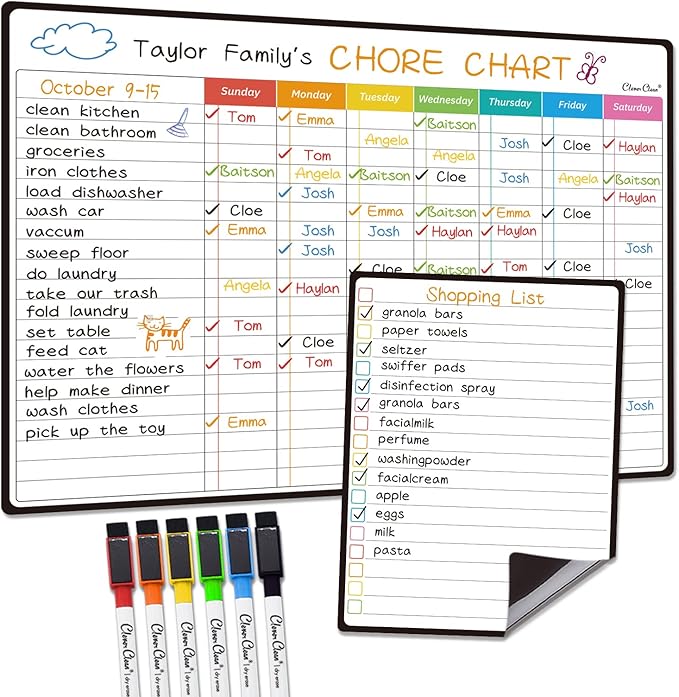Your cart is currently empty!

9 Tips for Working Full-time & Homeschooling Your Kids
Posted by:
|
On:
|
How a Full-Time Working Mom Can Achieve Her Homeschooling Goals: A Lighthearted Guide
Balancing a full-time career while managing the full-time education of your children at home sounds like the stuff superhero movies are made of. But guess what? It’s not only possible – it can be one of the most rewarding journeys you embark on. Whether you’re a working mom, single mother, or part-time professional, the journey of a homeschooling mom is one filled with ups, downs, and, ultimately, beautiful moments of growth and bonding.
So let’s dive into how you, a full-time working mom, can pull off this incredible feat with joy, flexibility, and a few realistic tips along the way. This is your roadmap, packed with ideas to inspire and encourage your homeschooling journey, whether you’re just beginning your first year homeschooling or you’ve been on the path for a while.

1. Redefining Homeschooling: Finding Flexibility in Your Day
One of the biggest challenges for working parents and homeschooling moms is finding time in the day to make it all work. As a working mom, your schedule may already feel packed with hours of work, but here’s where the flexibility of homeschooling shines. The truth is, the typical 8 a.m. to 3 p.m. school schedule doesn’t have to be your homeschooling schedule. In fact, one of the biggest perks of homeschooling is that you get to design a homeschool schedule that fits your family’s needs and rhythms.

Different Ways to Structure Your Homeschool Day:
- Early Morning or Evening Learning: For full-time working moms, one option is to start homeschooling in the early morning before your workday or in the evenings. Older kids, especially, can tackle independent work, which frees up your time. Younger grades don’t typically take all that long to complete their school work. Carving out anywhere from 30min-1hr before or after work is achievable.
- Weekend Schooling: If weekdays are too packed, consider a weekend schooling structure. Homeschooling doesn’t require you to follow a traditional school week. This gives you flexibility for more family time during the week. Please make sure to check your State’s laws in regards to this schedule as each state is different. In the state of Tennessee we are required to have 4hrs a day of instruction for 180 days in the calendar year. If you only plan on weekend schooling you may want to add some video lessons or co-ops to help cover extra days to meet this criteria.
- Divide and Conquer: If you have family members or friends in your homeschooling community who can step in occasionally, don’t hesitate to lean on them for help. Your homeschooling community can be a great support system. This has saved us greatly with being a large family. When we have had sick kids & I have had work engagements, my mom-friends have stepped in & picked the other children up for our scheduled field trips. Making friends in the homeschool community not only is easy, but a life-line.
2. Balancing Work Time and Homeschooling Time: The Magic of Multitasking
Juggling a full-time job with homeschooling might feel like spinning plates, but with some smart multitasking, you can make it work. Here’s the key: your work day and homeschool day don’t have to be two separate entities.
Tips for Balancing Work and Homeschooling:
- Integrate Learning with Daily Tasks: Get creative! You can have your younger children practice reading while you’re making dinner or encourage older children to explore independent work while you’re finishing up a project. Having daily tasks laid out as part of their everyday routine is key to this. Quite activities such as reading, handwriting, art projects or crafting, are all great activities that typically do not require much supervision from mom.
- Utilize Your Work Breaks: Instead of scrolling through social media on your break, use that time for quick check-ins with your kids. Review their homeschool work, assign new tasks, or set up an educational activity. This is the time where I will encourage my kiddo’s to bring their workbooks to my desk we may review any questions they might have.
- Incorporate Life Skills as School: Family chores like cooking, organizing, or budgeting all count as learning experiences, especially if you make them part of your homeschool curriculum. You maybe able to relate to graduation High School & heading off to college not knowing how to write a check, grocery shop, or budget your finances. However, you do know how to do those things now. This is a great opportunity to bring your kiddos alongside you as you complete these daily tasks, even letting them take the lead at times, so that they themselves won’t have the same experience you did when its time for them to fly the coop.

3. Finding the Right Homeschool Curriculum for Your Family
Choosing the right homeschool curriculum can be daunting, especially for a busy working mom. Luckily, homeschooling offers a range of curriculum choices that can cater to every family’s style and needs. Do NOT, I repeat do NOT let choosing the “right” curriculum stop you from jumping head first into choosing homeschooling for your family.
Options for Homeschool Curriculum:
- Traditional Homeschool Curriculum: Perfect for homeschooling parents who prefer a structured approach similar to what’s taught in a private school or Christian school setting. Be cautious not to simulate public school at home. Removing your children from the system & placing them in a room inside your home or even a similar schedule would be quite contradictory. When thinking of Traditional Homeschool Curriculum, think more along the lines of work books, structured days, & a few quizzes & tests throughout.
- Online School Programs: Many homeschooling moms turn to online school programs that allow for more independent learning. These can be excellent for older children and middle school students who are comfortable learning online. We utilized this for our first full year homeschooling & I am so glad we did. My kids learned a lot, but the pressure was taken off of me to plan everything out. That was just what my anxiety needed in the beginning. We have since changed now that I am a more confident Homeschooling Mom of 6, but I still think this is a phenomenal resource for parents who need a partnership to make working full-time & homeschooling fit together.
- Unit Studies and Interest-Based Learning: This approach lets kids dive deep into subjects they’re passionate about. Whether it’s space exploration, history, or the science of baking, this is a fun, engaging way to learn. I have noticed boys seem to do well with these type of studies. They like to learn all the information, obsess on it actually, then hop on to the new & better thing. Using unit studies during the summer months has proven to help retain the child’s information over the summer break so that they do not lose what valuable information you taught them the other 9 months out of the year.

4. First Year Homeschooling Tips: Starting Strong Without Burning Out
Starting your first year homeschooling can be intimidating, but it’s also a time filled with excitement and possibility. The best way to start strong is to take it slow. Remember, your homeschool journey is just that – a journey.
Tips for First-Year Homeschooling:
- Set Realistic Expectations: Understand that not every day will be perfect. There will be good days and challenging days, but each one is an opportunity for growth. Notes that even if you think you have set a realistic expectation, this goal-post to can be moved. Unschooling is definitely a thing for first year homeschoolers. Think of it as detoxing- or Summer Break if you will. Kids most definitely structure and routine, but decompressing from the rat race that is the traditional school setting it a lot of adjustment on such a small body. Don’t be surprised if your child seems ill or cranky at first. They are testing their new boundaries & you will need to hold the line on some of these.
- Join a Homeschooling Community: Connect with other homeschooling parents and working moms who are navigating the same path. A support group can be invaluable for advice, encouragement, and even occasional field trips! Homeschooling is becoming more and more popular with communities growing in leaps and bounds. Not only are you able to find local parents who are also on this journey, but full fledge sports teams are being formed with just homeschooled kids. Its a wonderful time we live in!
- Embrace Flexibility: You don’t have to stick to a rigid homeschool schedule. The beauty of homeschooling is that it can change with the seasons, moods, and needs of your family. It no secret that many homeschool families find themselves getting the majority of their work completed or caught up on during the winter months such as January & February. Commitments have died down, sports seasons have ended, and as a whole not many get-togethers are planned during these months. The beauty of homeschooling allows you to pull back & push forward at the speed that fits your child’s needs the best.
5. Homeschooling Older Children vs. Younger Children
The homeschooling needs of older children are different from those of younger children. Older kids can often handle more independent work, while younger children may need more hands-on guidance.
Homeschooling Tips for Different Age Groups:
- Younger Children: Create a hands-on, playful learning environment. For instance, activities like counting while cooking, sorting laundry by color, or reading together build foundational skills in a fun way. Adding educational toys into their rotation is a wise decision. I have found many on TEMU that are budget friendly & quality made. Depending on your preference, some screen time can be implemented with educational shows. I find that this site allows for me to find wooden toys at a price I can afford to buy as my children master skills.
- Older Kids: Encourage self-directed learning. Assign them projects or units that they can work on independently, then come together to review their progress. Setting an older child out on a path to complete a project is key to keeping them self entertained. While in years past education was only thought of as cramming in information, passing a test, & moving on to a new unit- that’s not the way your homeschool has to work. Creating tasks or projects such as building a website, learning about cryptocurrency, or completing a woodworking project are all homeschool worthy.

6. Schooling with a Full House: Managing the Number of Children
Whether you have one child or a small army, each homeschooling journey will look different. When managing a large family, organization becomes your best friend.
Chore Charts and Schedules:
- Chore Charts: These are not just for a clean house but can also teach responsibility. Assign age-appropriate chores that tie into “school work,” like managing personal schedules or planning family meals. In our home each child has their individual task list, then the home itself has a mastery list that the children must come together to complete. These lists are kept in page protectors inside a 3-prong folder for the children to utilize a dry erase marker & “check” items off as they go. If you prefer something thats more visual, displaying a magnetic chore chart on your fridge is always a great reminded for the children as well.

- Schoolwork Stations: Create designated workspaces for each child, especially if you have children of different ages. This helps them concentrate on their own school work without distractions. I find this necessary as the kiddos get older in age & their workload becomes heavier. This makes sense as most adults also work better in calm environments. This can look like small desks set up throughout the home, in their rooms, or even creating a designated homeschool room with beanbags & comfy chairs throughout. Out of all the versions we have tried, I have found my kids gravitate towards the kitchen table & couch the most. Do what suites your child’s needs the best & don’t be surprised if the fanciest of homeschool rooms is not where they thrive.

7. Embracing the Homeschooling Community and Resources
The homeschooling community is rich with resources, experiences, and advice, which can be especially valuable for single moms or working moms juggling multiple roles. Many homeschool support groups organize field trips, events, and resources, which can be a huge asset in your homeschooling journey. Facebook groups are a massive resource that cannot go without mention. Search for local groups in your areas and do not hesitate to pop in & ask questions. Most of the time, there are tons of moms just like you who are either wanting to know the same answer or have been through a similar situation.
8. Making the Most of Family Time
Balancing work, homeschool, and family time can feel like a juggling act, but with a few intentional strategies, you can make it happen. Try setting aside time each week to connect as a family, free from the demands of work or school.
Family Time Tips:
- Weekend Adventures: Use weekends to go on educational field trips. Museums, science centers, and nature hikes are great ways to learn together outside the home. These trips can be based around what you are currently studying in your curriculum & you will be surprised by what facts pop out of their mouths as they may connections between their school books & the real world.
- Unplug Together: Take time each week to unplug and just be together. Whether it’s playing board games, going for a walk, or cooking a meal as a family, these moments create lasting memories. Only in recent generations as humans were we as families separated for living, work, & education. Coming back together to doing all inside the walls of our home can be an adjustment-but not impossible. Give you & your children grace & remember at the end of this journey a solid & healthy relationship is the goal- not a kid with a high IQ score who hates his family.
9. Allowing Yourself Grace and Flexibility
As a working mom, homeschooling is a journey that requires flexibility and grace. There will be hard times when balancing a full-time job and homeschooling seems impossible. But remember, the commitment you’re making to your children is a tremendous gift. There are so many great things that come from taking this road less traveled, and each step you take is an inspiration and a legacy for your kids.
Real Talk for Working Moms:
- Give Yourself Credit: Homeschooling, especially as a working mom, is no small feat. Celebrate your victories, big and small. This may look like something as small as a coffee date out with a girl friend or as extravagant as an exotic vacation. You taking on supporting your family as well as curating your child’s education is award worthy. Praise yourself & set the example that hard work reaps great rewards.
- Reach Out for Support: Don’t hesitate to reach out for help. Lean on family members, friends, or local homeschooling groups when you need an extra hand. If you have a grandmother who is a phenomenal cook, allow her to come in one day & teach the kids her favorite recipe. Maybe your sister is a beautiful pianist. If she is willing, having her give your kid’s music lessons once a week is a blessing to your schedule. What I have found is that many people want to help, you just have to curate your tribe with those people.
- Keep the Long View in Mind: Remember why you started this journey in the first place. Whether it’s to provide a tailored education for your kids, foster family bonds, or have more influence in their schooling, keeping your purpose front and center can help you push through tough days. Keeping a gratitude journal is a great habit to keep your “Why” top of mind daily.
In Conclusion
Homeschooling while working full time may seem like a massive mountain to climb, but with determination, creativity, and a supportive community, it’s an achievable and incredibly rewarding journey. Your unique story as a working parent, whether you’re balancing a full-time job or navigating single motherhood, is filled with moments of grace, resilience, and joy.
Remember, the great example you’re setting for your children is priceless. They see your hard work, dedication, and love – and those lessons go far beyond any school subject. So keep going, momma! You’re doing something remarkable, and with each day, you’re not only providing an education but also creating a home filled with love, growth, and endless possibility.